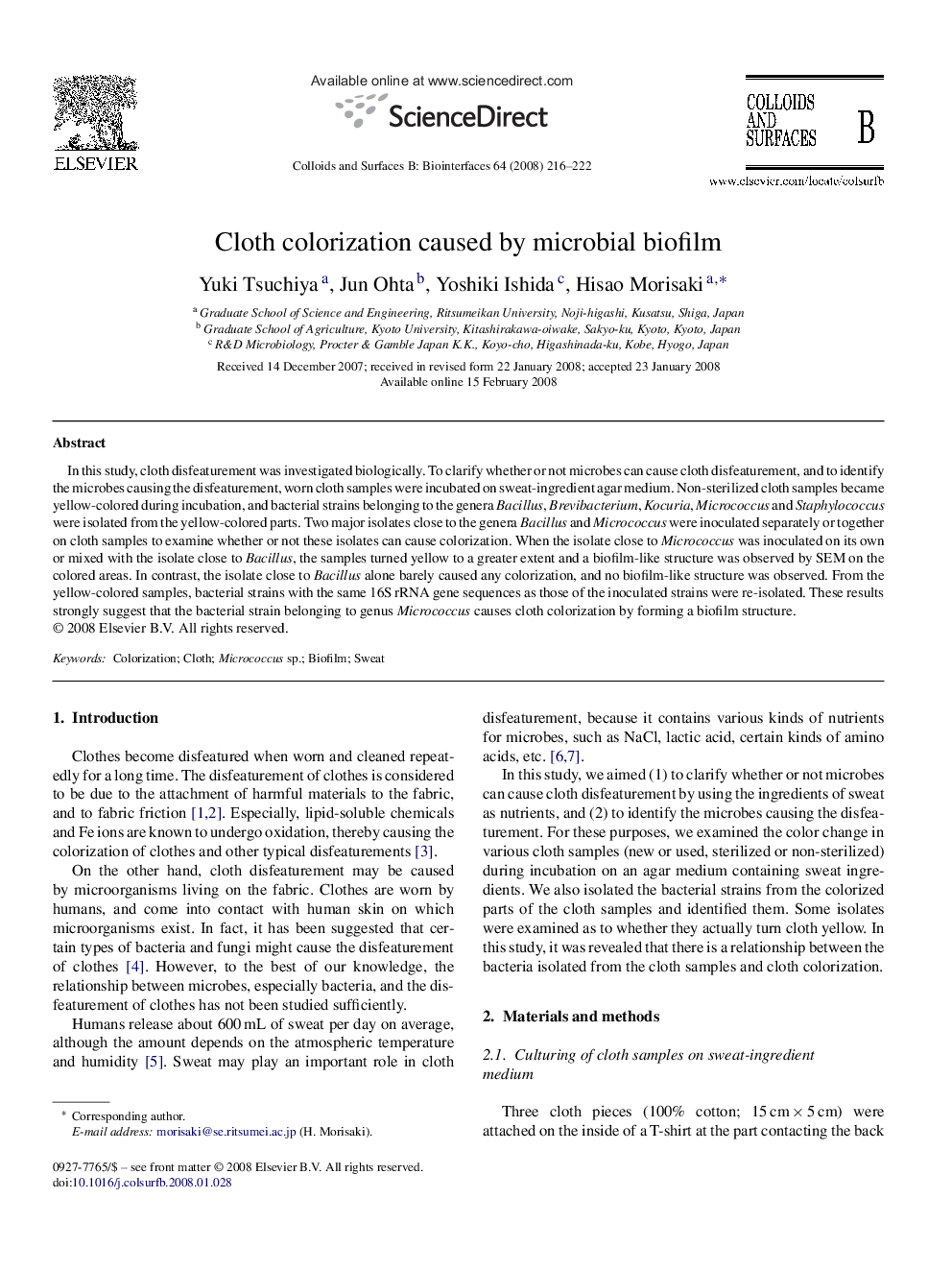| Article ID | Journal | Published Year | Pages | File Type |
|---|---|---|---|---|
| 602232 | Colloids and Surfaces B: Biointerfaces | 2008 | 7 Pages |
In this study, cloth disfeaturement was investigated biologically. To clarify whether or not microbes can cause cloth disfeaturement, and to identify the microbes causing the disfeaturement, worn cloth samples were incubated on sweat-ingredient agar medium. Non-sterilized cloth samples became yellow-colored during incubation, and bacterial strains belonging to the genera Bacillus, Brevibacterium, Kocuria, Micrococcus and Staphylococcus were isolated from the yellow-colored parts. Two major isolates close to the genera Bacillus and Micrococcus were inoculated separately or together on cloth samples to examine whether or not these isolates can cause colorization. When the isolate close to Micrococcus was inoculated on its own or mixed with the isolate close to Bacillus, the samples turned yellow to a greater extent and a biofilm-like structure was observed by SEM on the colored areas. In contrast, the isolate close to Bacillus alone barely caused any colorization, and no biofilm-like structure was observed. From the yellow-colored samples, bacterial strains with the same 16S rRNA gene sequences as those of the inoculated strains were re-isolated. These results strongly suggest that the bacterial strain belonging to genus Micrococcus causes cloth colorization by forming a biofilm structure.
